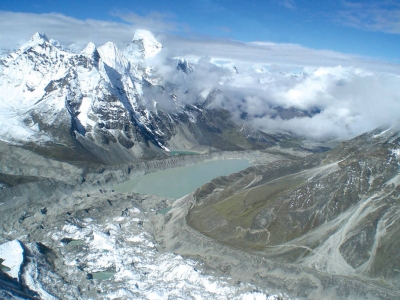
According to a report in The Guardian, the melting of Himalayan glaciers had doubled since 2000. In the last four decades, a quarter of all ice has melted. The accelerating losses indicate a “devastating” future for the region. A billion people depend on the Himalayan snow for regular water. Scientists say that 8bn tonnes of ice are being lost every year and not replaced by snow. The glaciers at the lower levels of the Himalayas are shrinking in height by 5 metres annually. This heavy melting is entirely due to human activity. Prof. Joerg Schaefer, climatologist said, “It is really the doubling of the speed of glacier melt that is most concerning.”
On average, the glacier surfaces shrank by 22cm (8.6 inches) a year from 1975 to 2000. But the melting has accelerated with an average loss of 43cm a year from 2000 to 2016. We know this shrinking is caused by us because it happens at similar rates all along the mountain chain.
Temperature data from the region shows an average rise of 1C from 2000-16 compared with 1975-2000. “Even glaciers in the highest mountains of the world are responding to global air temperature increases driven by the combustion of fossil fuels,” said Joseph Shea, at the University of Northern British Columbia in Canada. “To stop the temperature rise, we have to cool the planet,” he said. “We have to not only slow down greenhouse gas emissions, we have to reverse them. That is the challenging for the next 20 years.”
Picture Credit : Google



